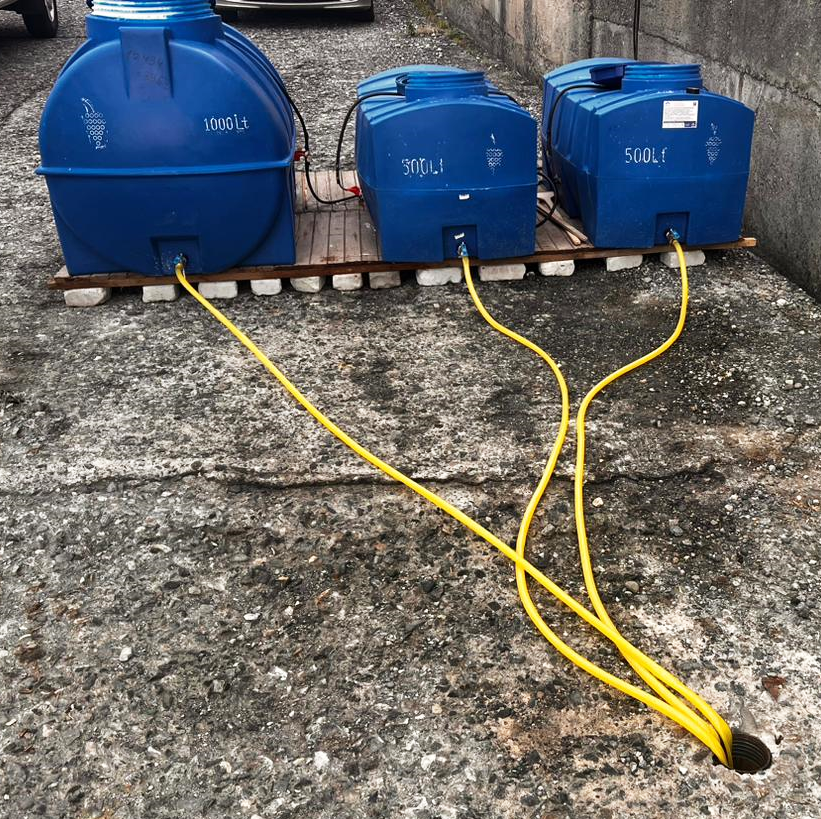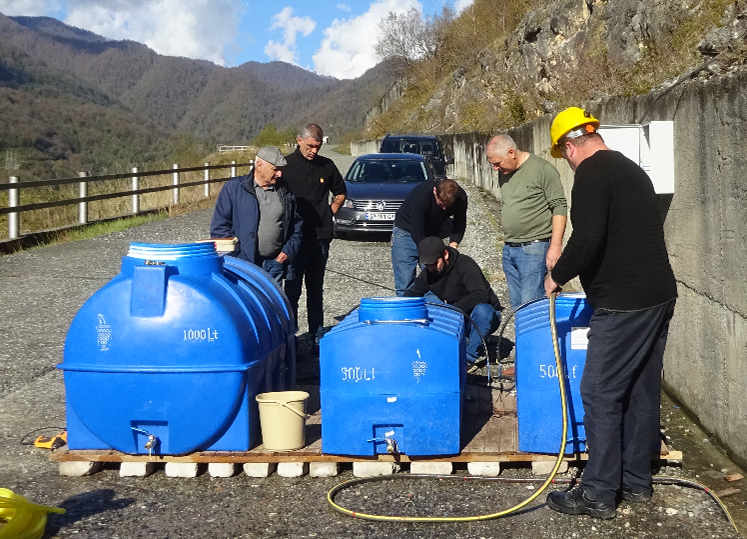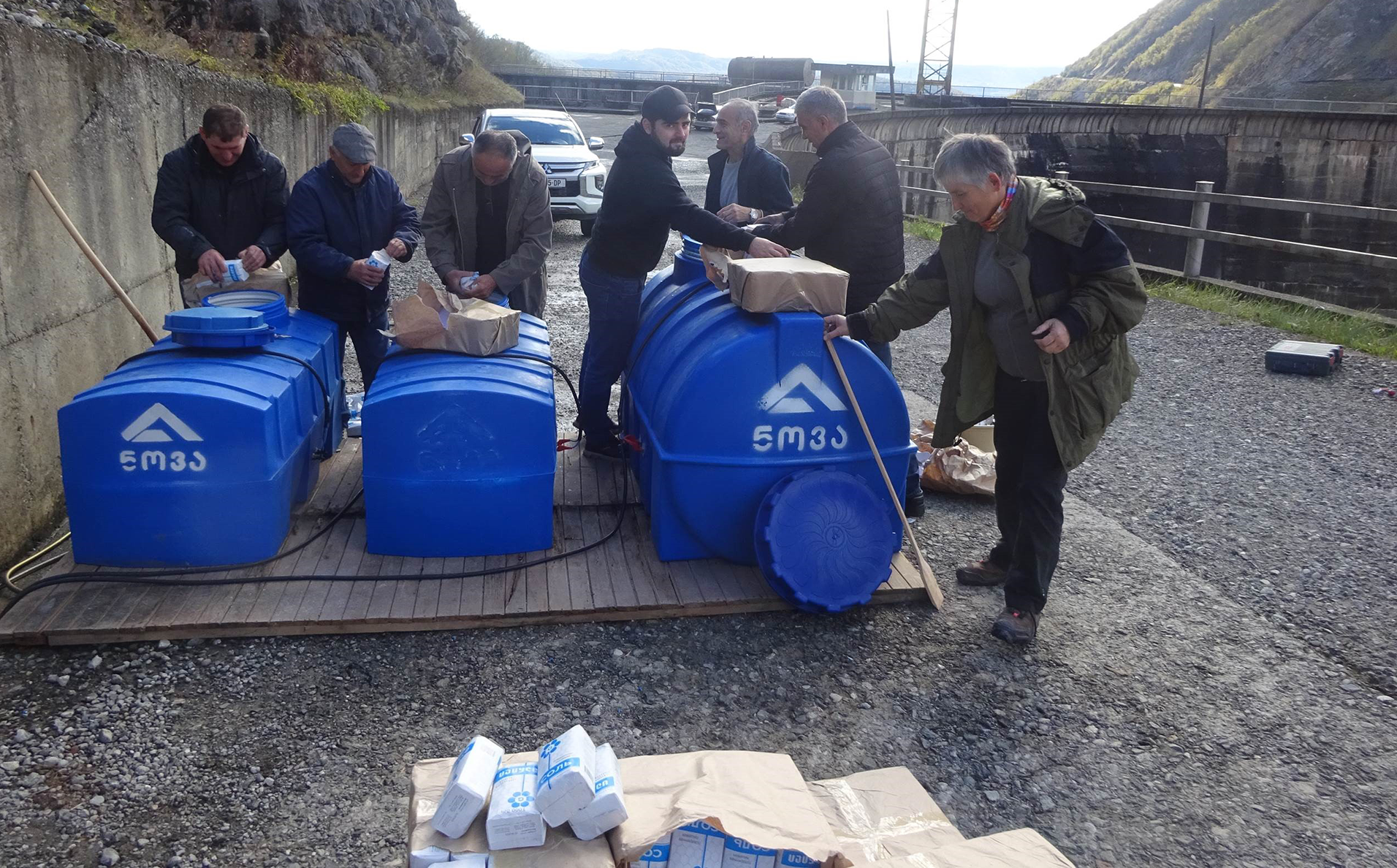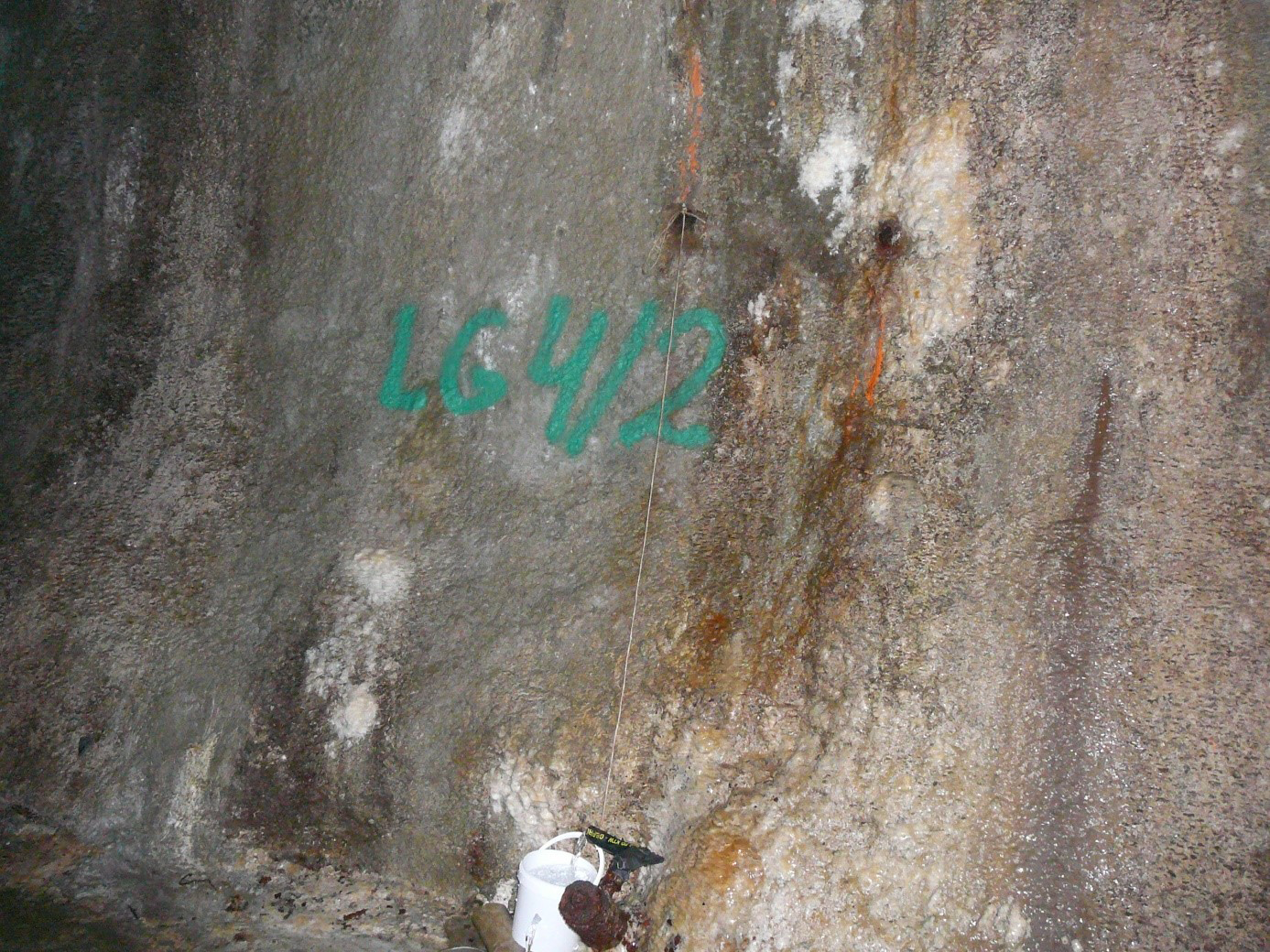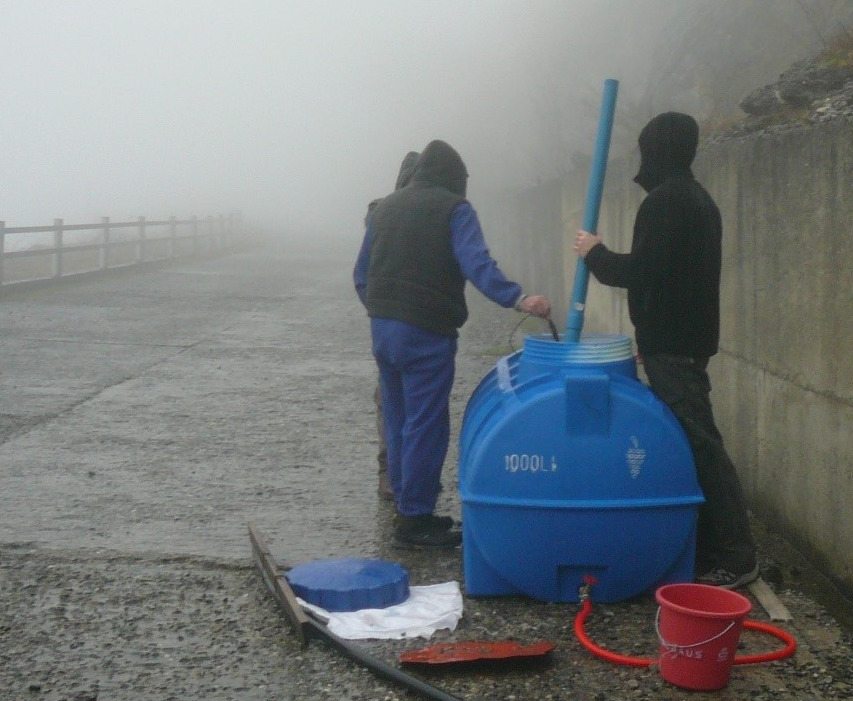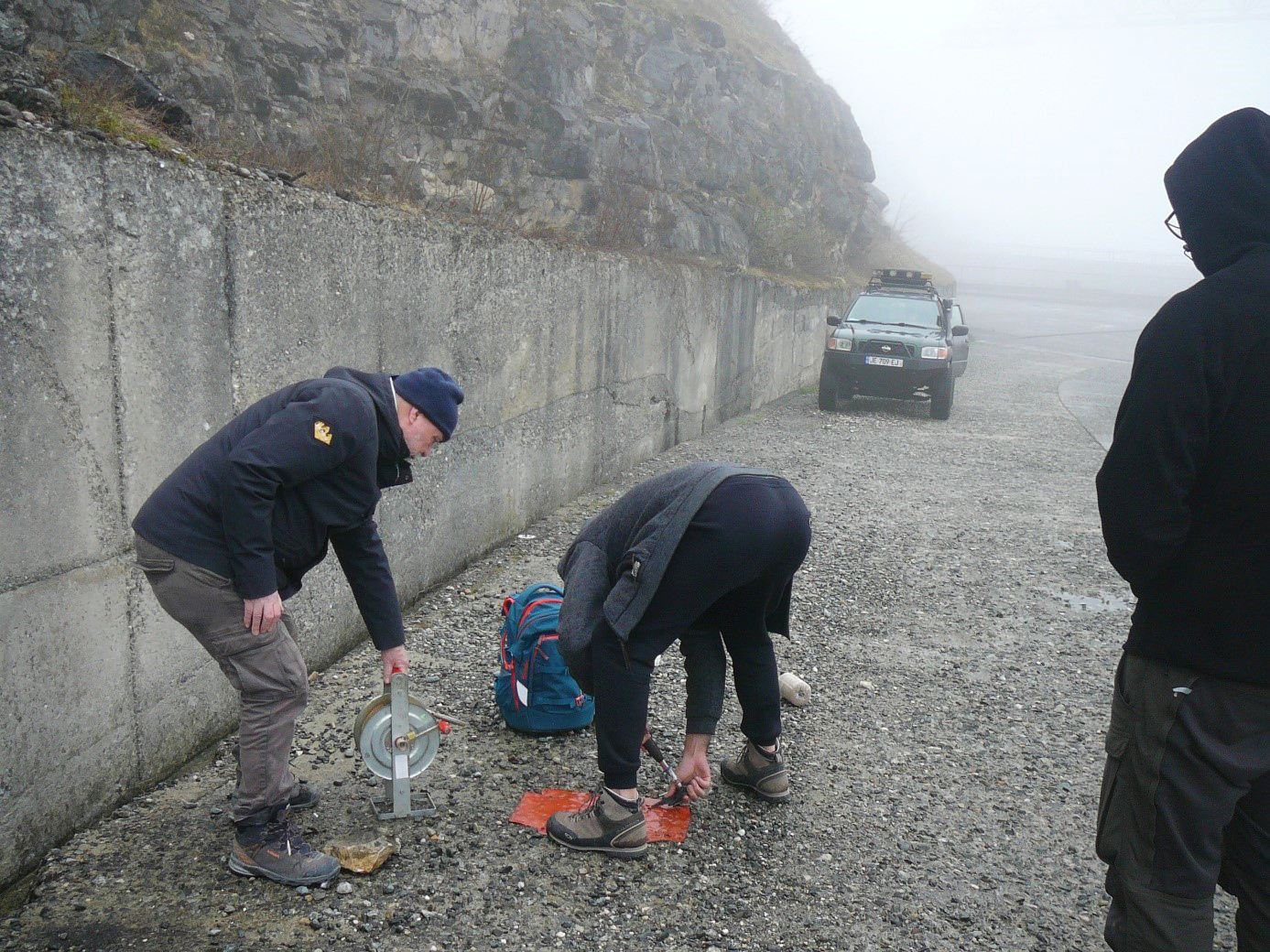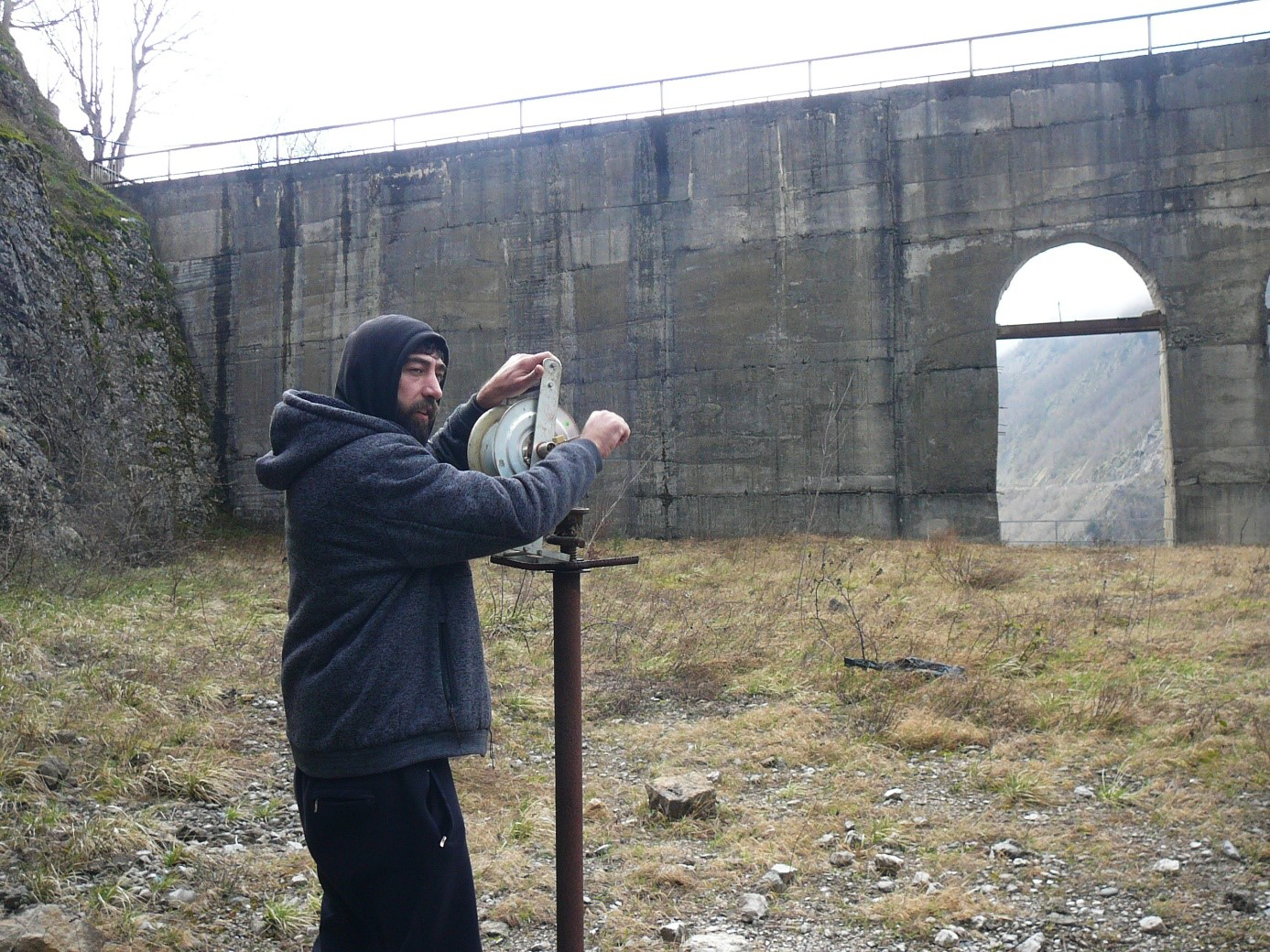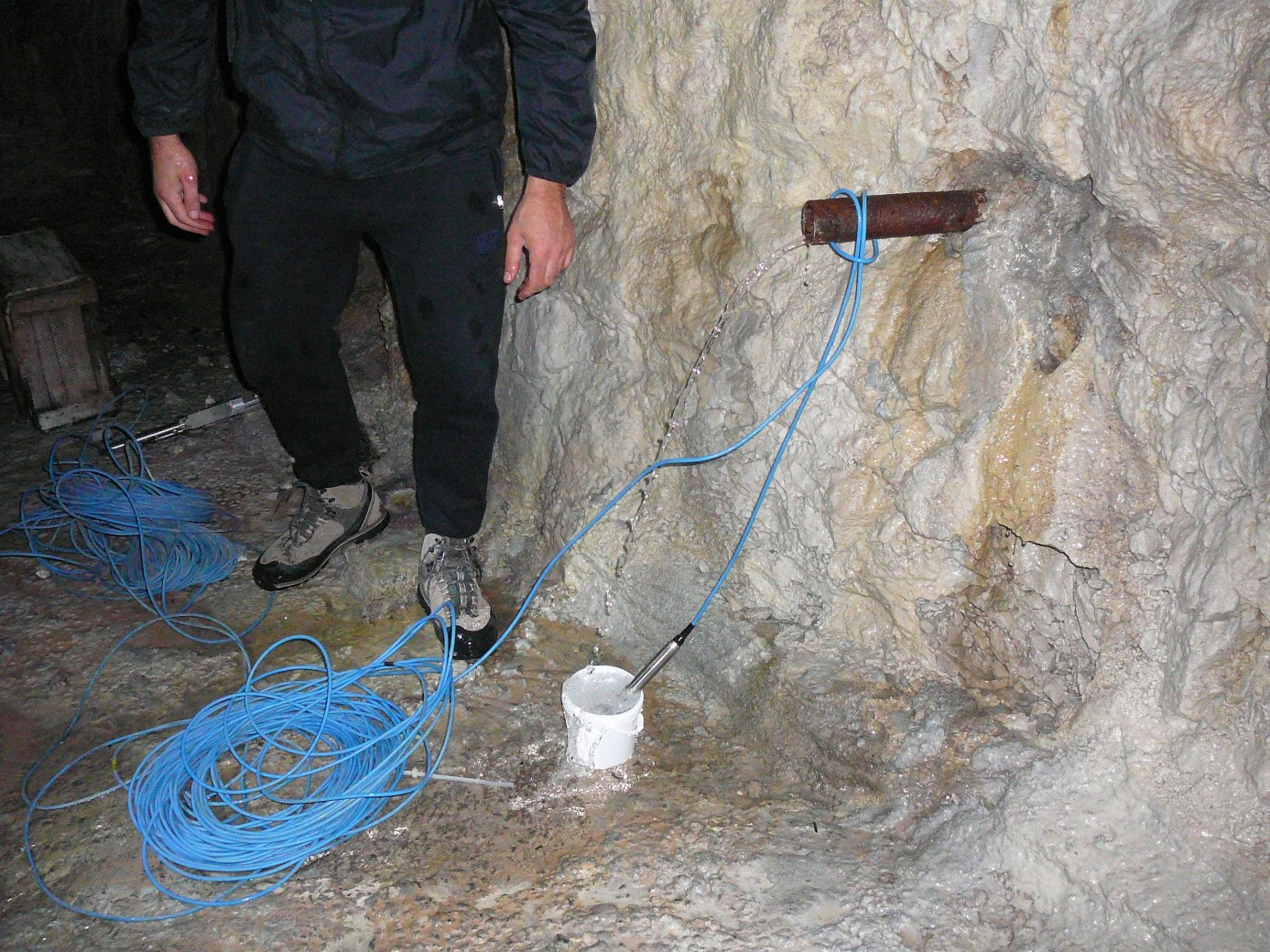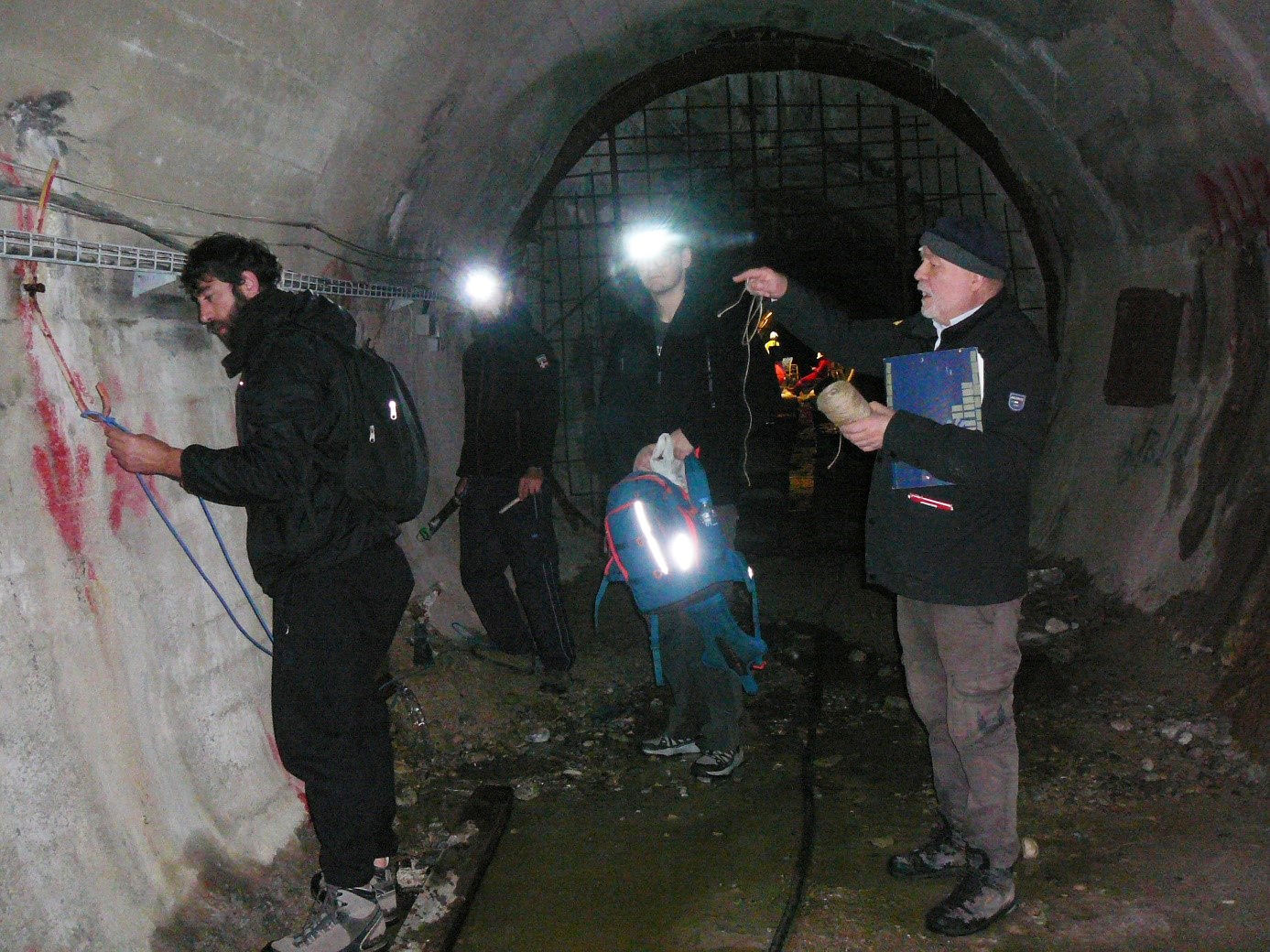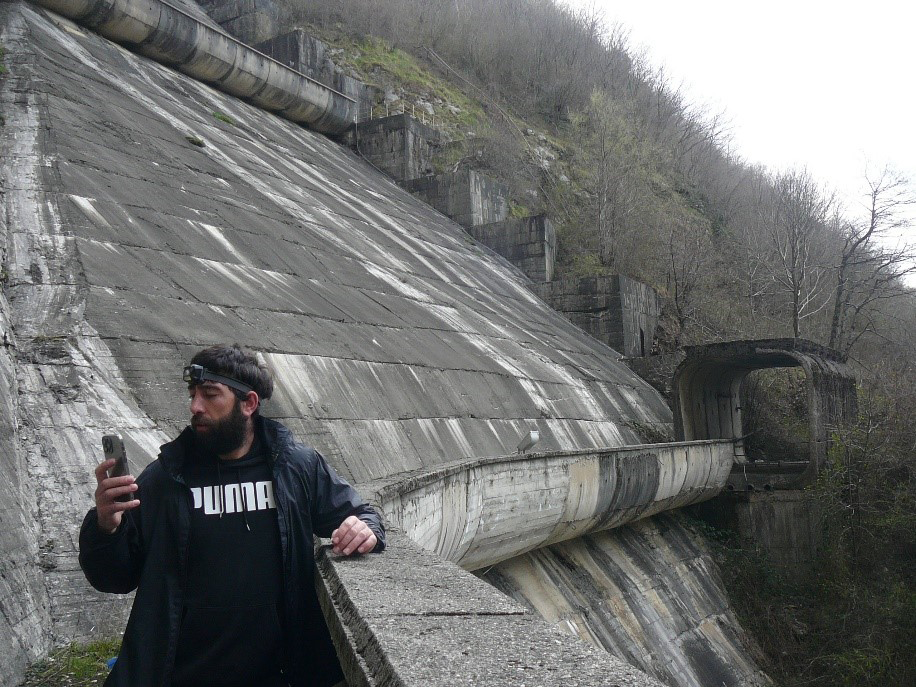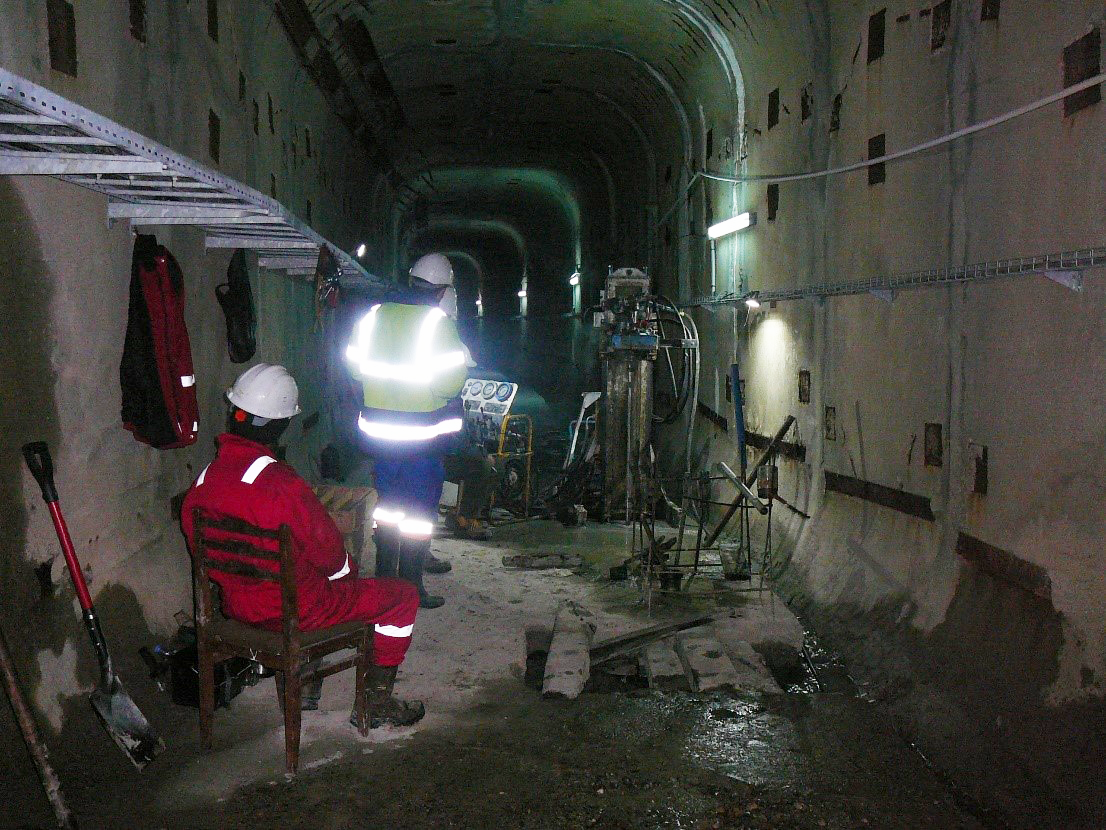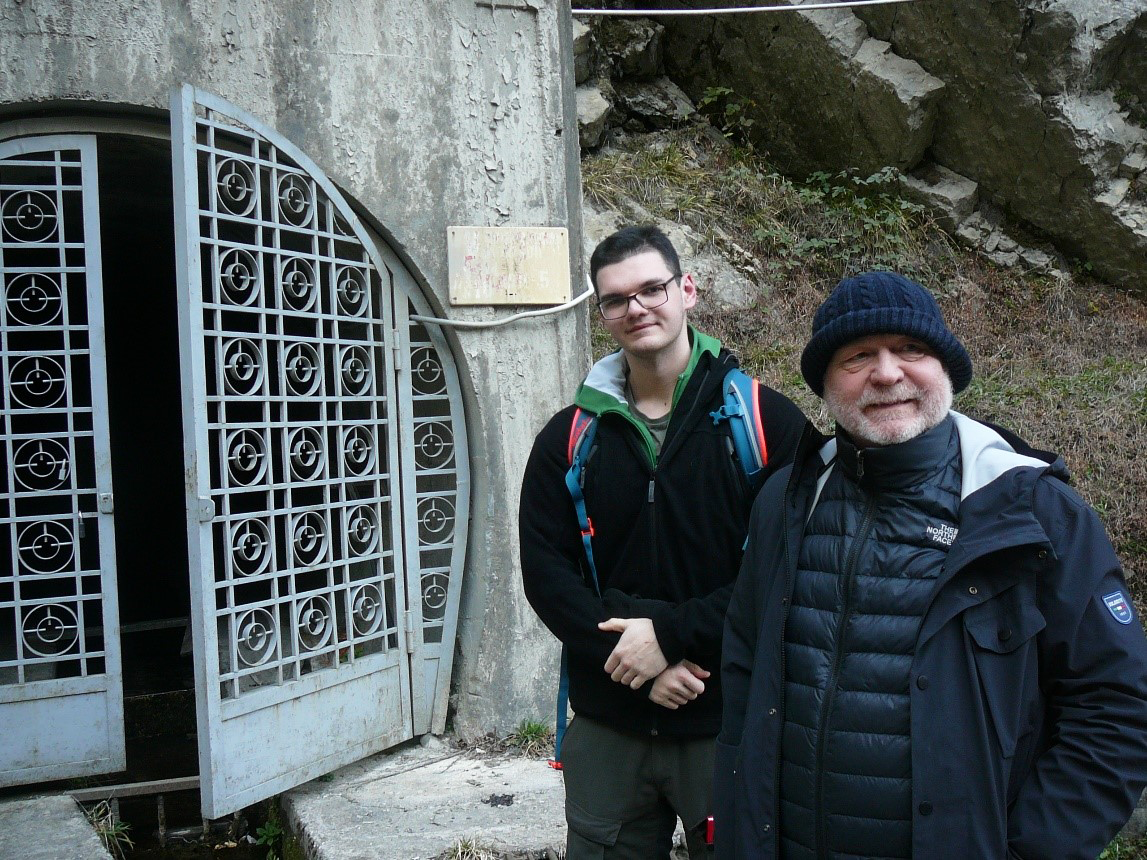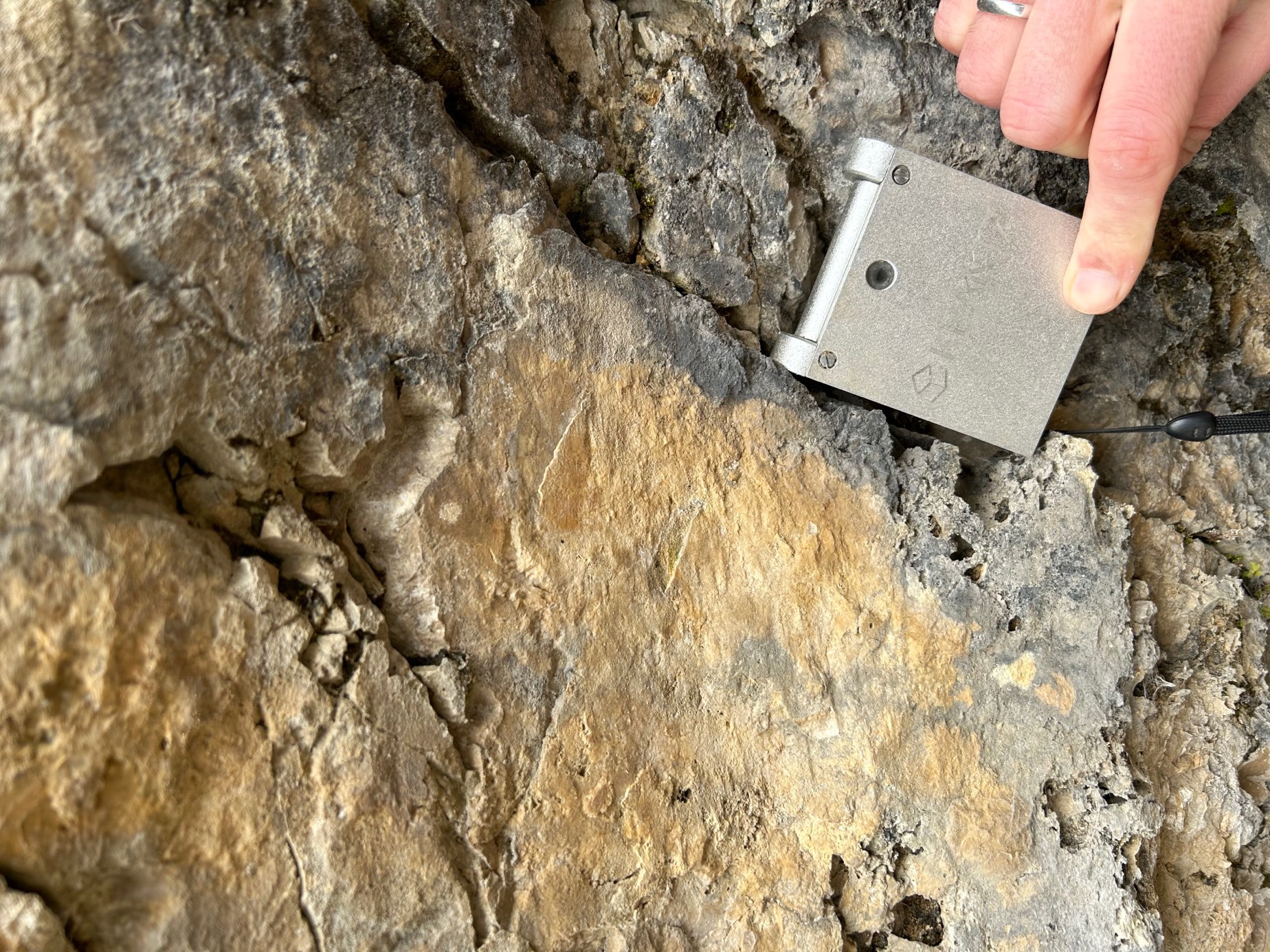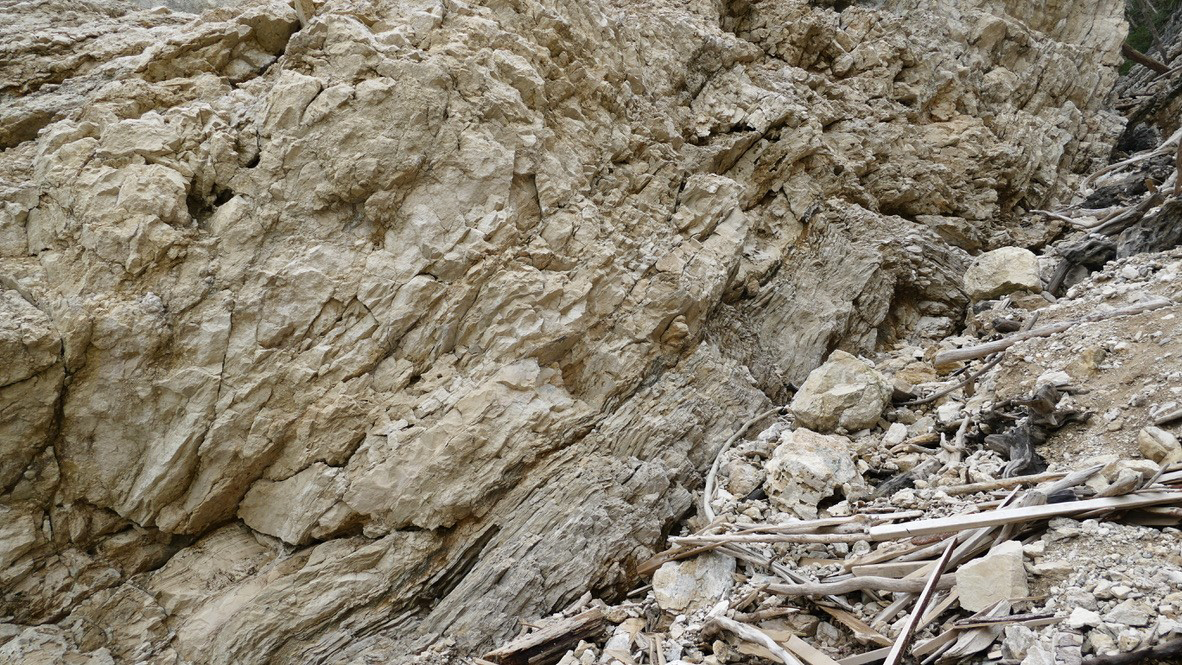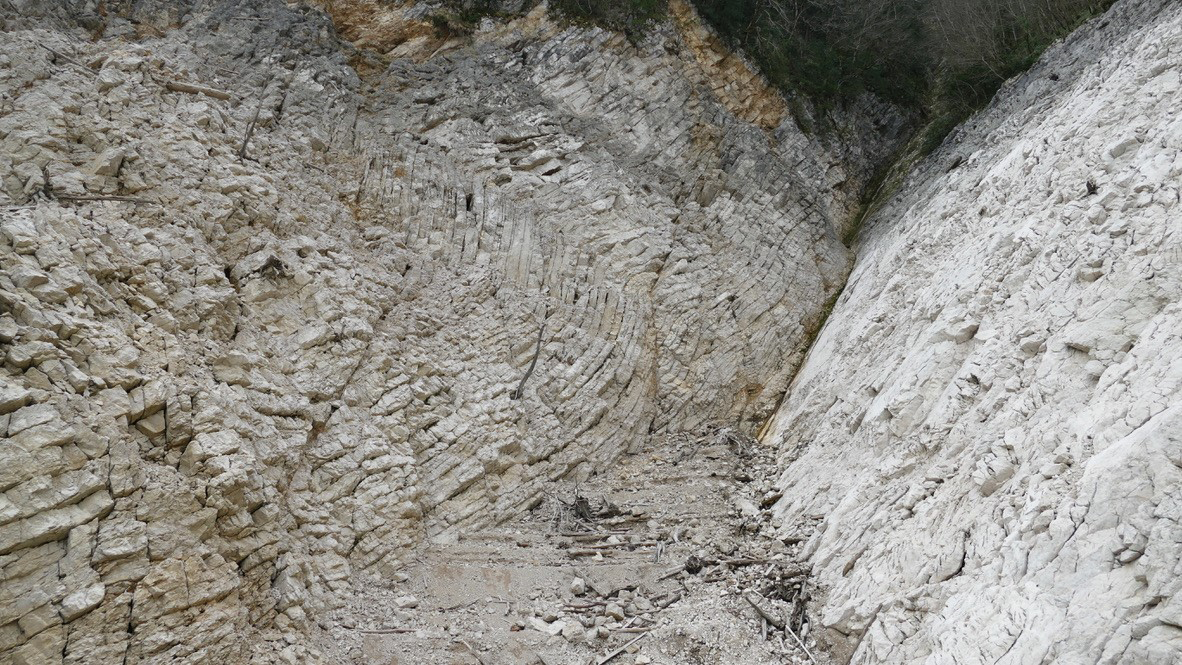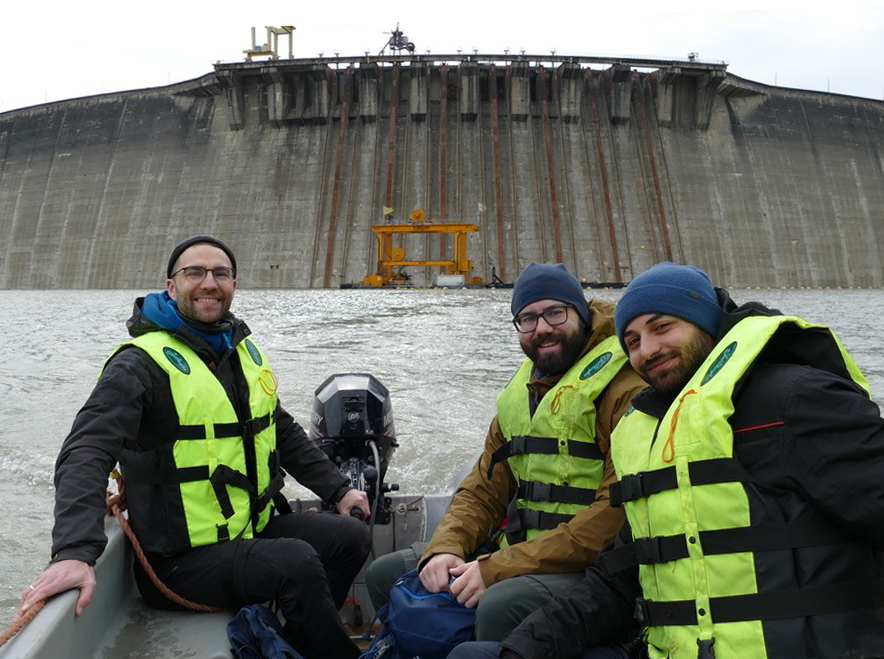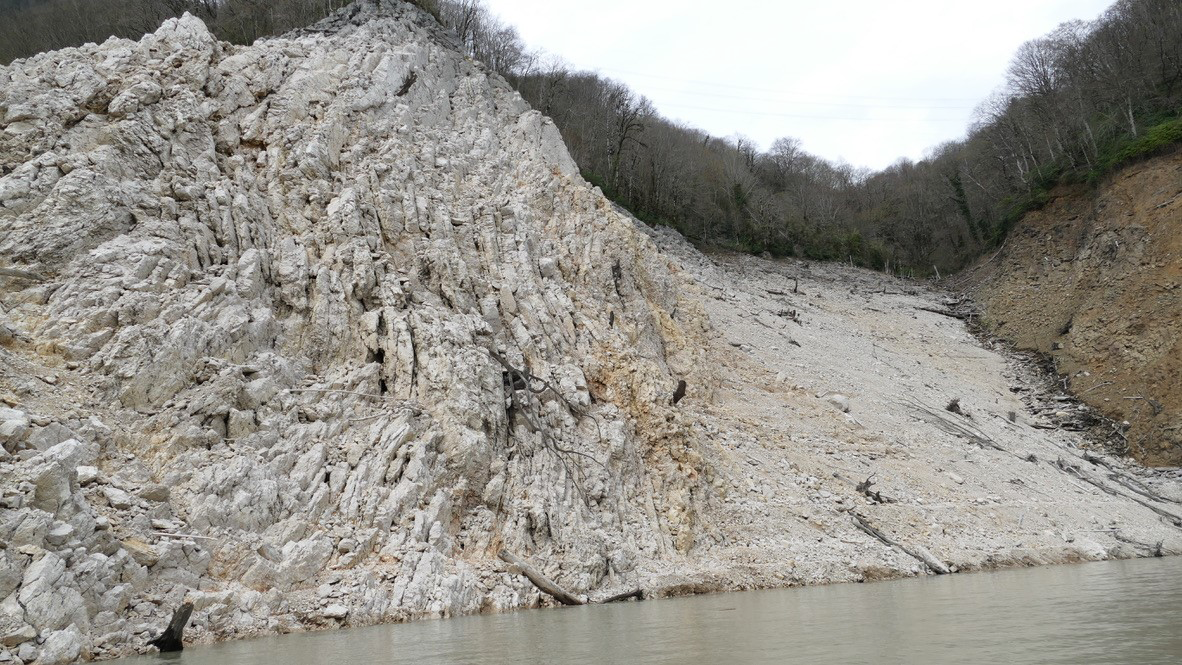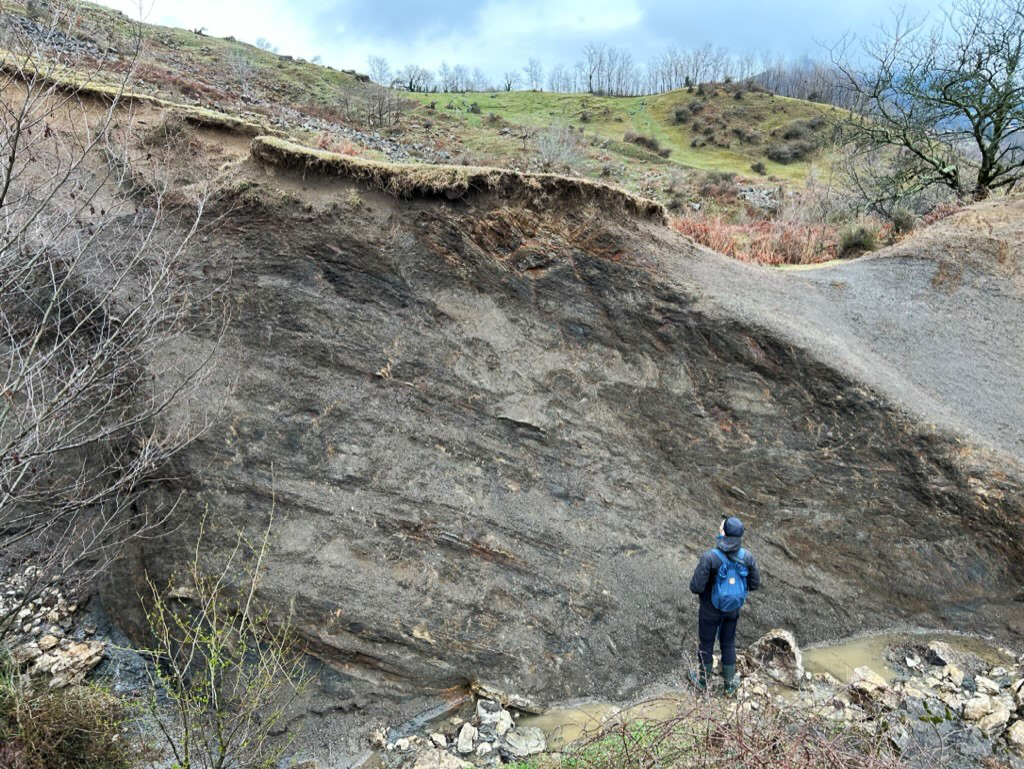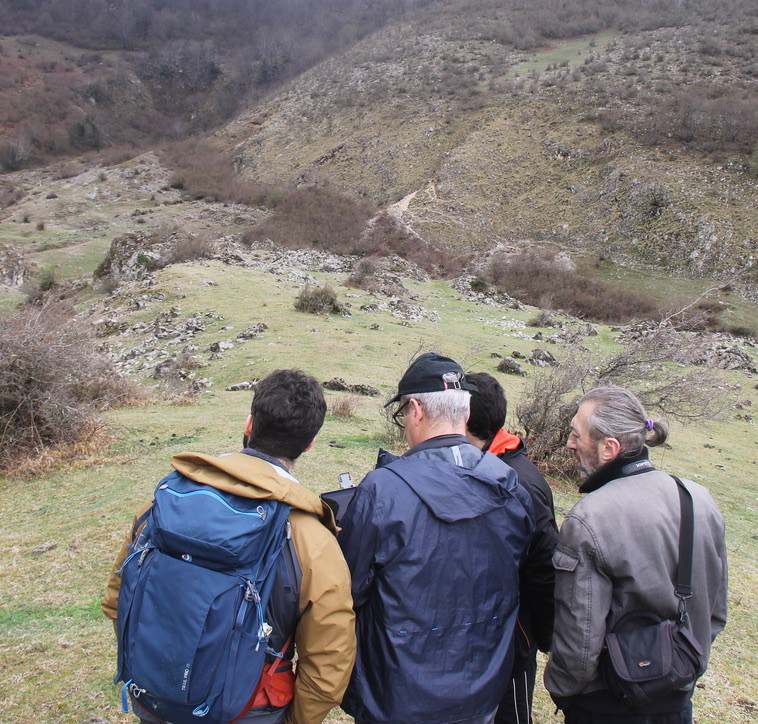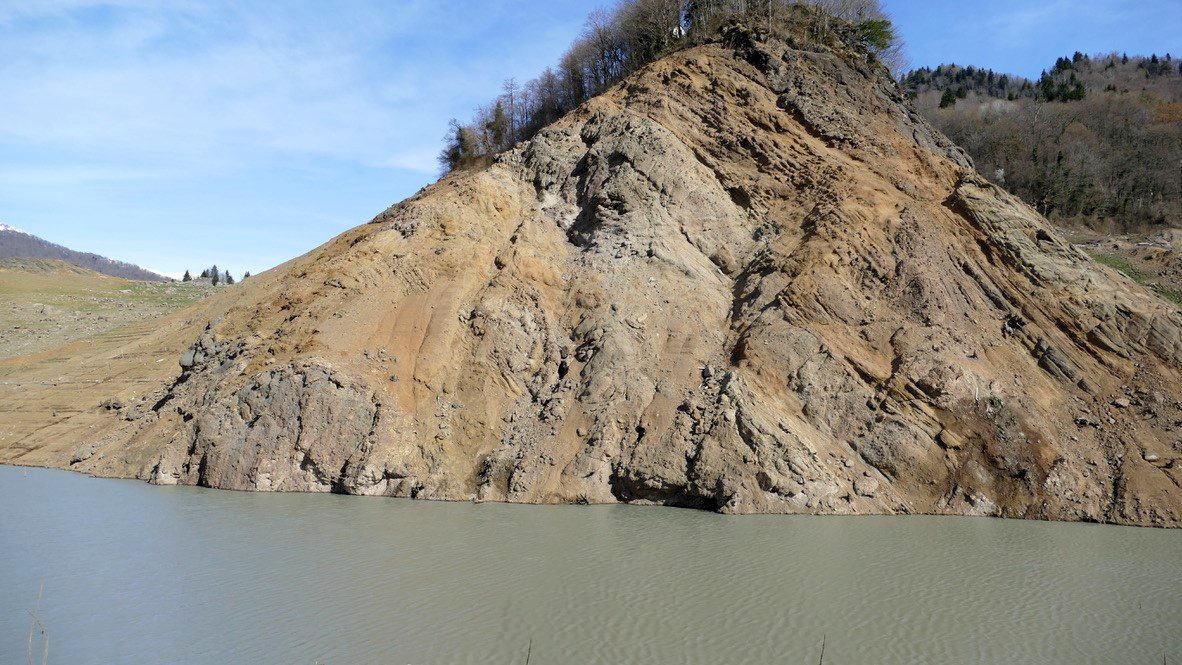Thursday, November 16
After another night with shifts, Thomas provide information on structural core analysis to the students. The weather was quite cold and ugly.
Birgit, Misha and Alexander visited the drillsite of the Stucky well BH-4 and inspected the drillcores from this well. The majority of cores was returned to the warehouse core storage site on Thursday afternoon.
The last shift of the tunnel explorers ended on Friday morning at 9 and also the workshop finished. We cleaned up the working places, put the material and cores into the storage room of hotel Enguri.
Wednesday, November 15
Andreas Kron and Roman Zorn left in the morning. Since the second AGK WTW failed it was replaced by WTW-Piewak. One of the WTWs of G. Melikadze (George WTW-TSU 1) had been repaired and measurements had been done in parallel with George WTW-TSU 1 and with EIFER WTW. However, the WTW-Eifer failed soon afterwards we had no redundancy in the tunnel.
The WTW (George WTW-TSU 1) had been used 5 but in in the first afternoon shift also this one got into trouble but this could be solved on-site.
During the day we crossed fingers we hoped not have any further trouble with WTWs.
In the morning the students did field work and picked bedding planes on the right bank. In the afternoon they got a lecture via Zoom by Thomas Niederhuber about using QGis to display the data they have been acquiring in the field in the morning.
We organized that the drillers will provide us with core boxes for the structural analysis of Thursday morning. In the afternoon Misha and Alexander arrived.
Tuesday, November 14
During the night shift one of the WTWs of AGK started to work not properly and was replaced by WTW-EIFER.
Tornike went to Zugdidi to meet George Melikadze to get repair parts for the TSU WTWs.
Roman read out the data of the tunnels from the automatic instruments.
After helping during the night shifts our colleagues Matthieu and Andreas left us.
Monday, November 13
Injection started at 10 o`clock and from the small barrels it lasted 25 min, from the big barrel it lasted 50 min. In parallel the first teams started their monitoring shift in Tunnels 5 and 6. Automatic equipment has been installed in Tunnel 4 by Roman and Tornike. All shifts had a duration of 3 hours. And measurements took place in the following days and also in the nights. Each Tunnel contained 6 measurement locations. We measured both tunnels with the WTWs from AGK and used the WTW of EIFER (WTW-EIFER) and of Piewak (WTW-Piewak) in the tunnels for redundancy.
Roman Zorn had been working with Glötzl scientists to make the Glötzl registration start again.
Sunday, November 12
In the morning Andreas Schenk and Matthieu went on with campaign measurements with GB Sar.
As usual the workshop started with a lecture in the morning. The topic of this case was the description of cores and especially petal centreline fractures and core disking. In the discussion the evening before Professor Kalabegishvili showed those features in some wells drilled recently.
Afterwards, Thomas Röckel and Birgit Müller took the students for further baseline monitoring into the tunnels.
After lunch the students made their own Bändels for core analysis.
Andreas Kron and Andreas Schenk went to the bridges for maintenance of equipment.
In the evening there had been about 2 hours of lecture, explaining the DAMAST projects. Lecturers had been Birgit Müller (for seismicity and geomechanics), Andreas Schenk (for PS INSAR), Matthieu Rebmeister (for GB SAR) and Andreas Kron (for the sediment investigations).
Saturday, November 11
The students got a lecture in the morning, then we went with them to show the measurement locations for the tracer test experiment and we did with them baseline monitoring in tunnels 5 and 6. We worked in parallel groups.
In the afternoon they got a presentation by Roman Zorn in the lecture room and went lateron together with Prof. Kalabegishvili to the field. They also visited the injection site (Spartak well). For many of the students this was the first time when they had been at this place.
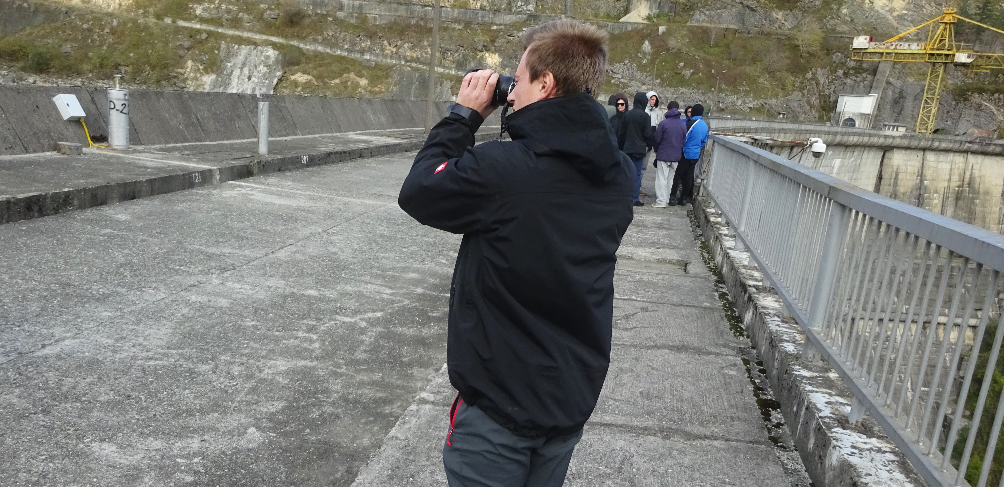
Student visit on Damtop explanation of environmental sensors

Students visited the tourist site and try to assemble the dam picture. This was not a prerequisite to get the certificate
On the dam, we were received by Director Joni Chania and his son Andria. They invited the group to visit the new art gallery in the directors building. We enjoyed very much the artworks by Keti Melkadze and the movie about the construction to Enguri Dam.
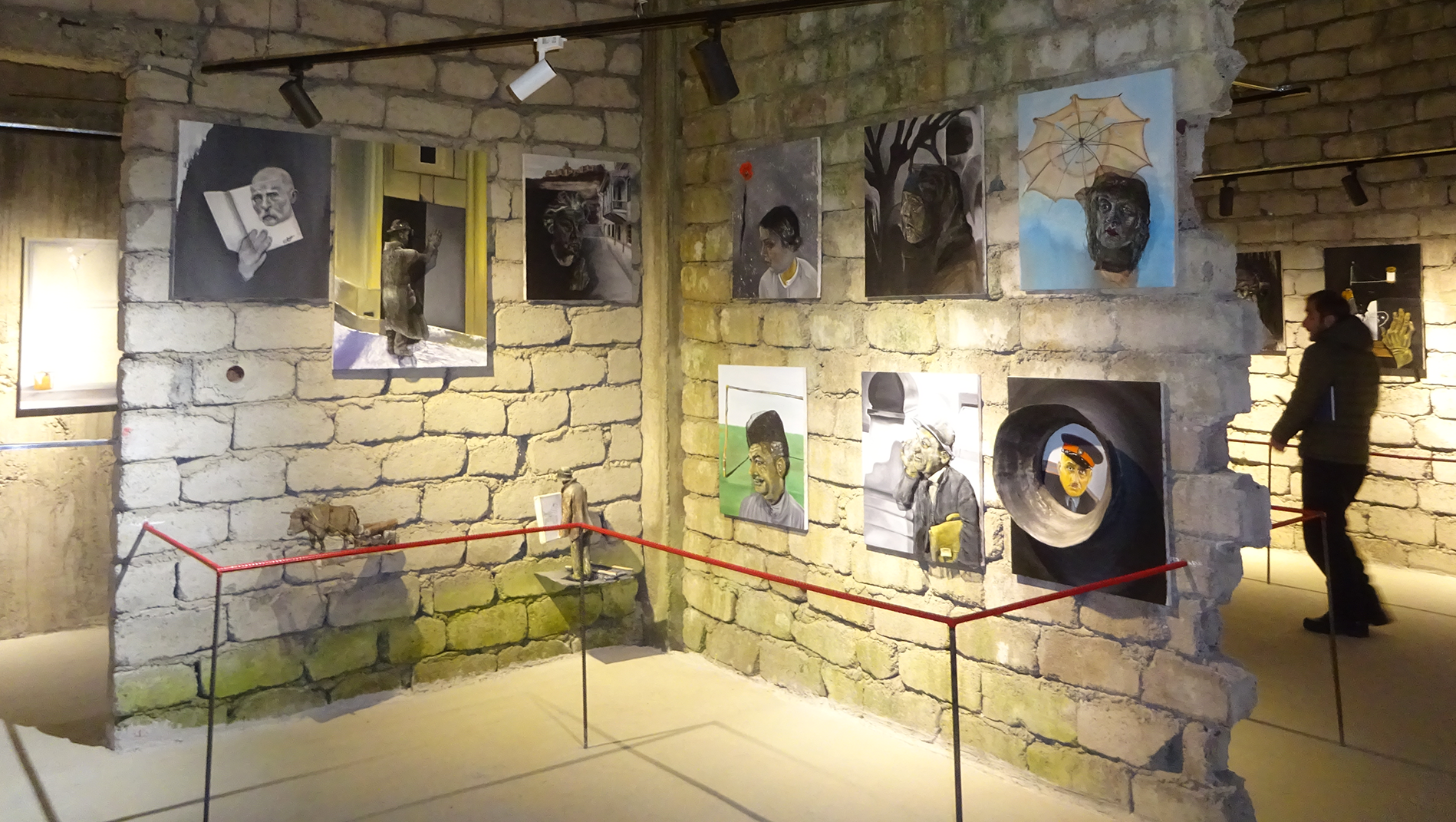 Art Gallery with Art work of Keti Melkadze
Art Gallery with Art work of Keti Melkadze
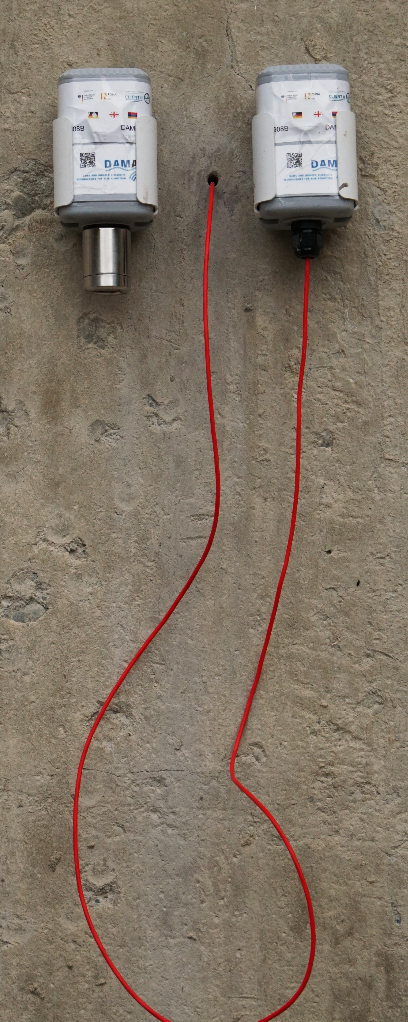
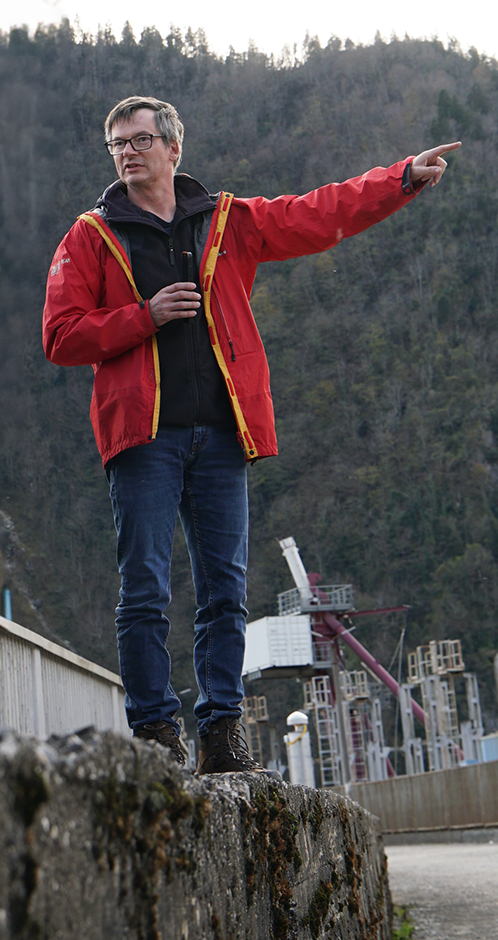
Roman Zorn explained temperature sensors and their installation possibilities also on the reservoir side of the dam (which has not yet been installed)
In the evening we had a team leader meeting for the DAAD SDG project: Dr. Schenk, Prof. Kalabegishvili, Prof. Tsereteli, Dr. Müller.
Friday, November 10
We went to Spartak well and checked the status of the barrel on the drill site (the drill rig had been demobilized) and put the 400 kg of salt into the water.
The workers had mounted the heaters, thus the salt dissolved well in the water.
Thursday, November 9
In the morning we visited some of the tunnels and inspected the locations in which there is sufficient water flow available for temperature and conductivity measurements.
In the afternoon we met the workers from Engurhesi and explained why we needed 60°C hot water (2000 l) and with 400 kgs of salt dissolved in it. They agreed to put the 3 barrels (1000 l, 500 l, 500 l) above the Spartak well, showed us the taps, hoses and heaters.
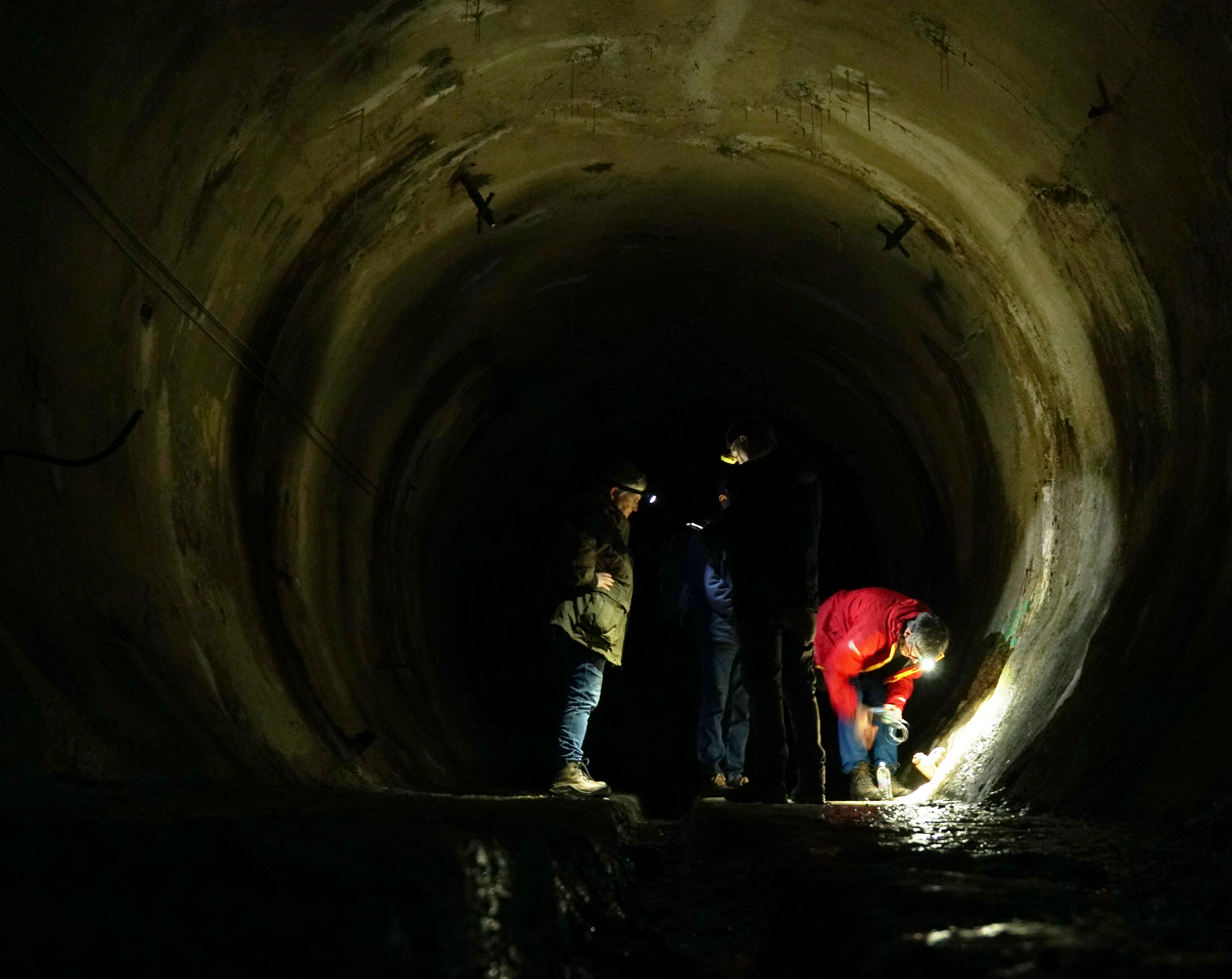 First test measurements in the tunnels
First test measurements in the tunnels
Wednesday, November 8
Transfer to Enguri High Dam. We enjoyed the faster ride on the new Highway which partly had been opened already. We visited the Spartak Well, where drillers have mobilized for well cleaning. Furthermore, we discussed and visited various drilling locations for the new wells (250 m directly in front of the dam, 90 m and medium height, and 60 m at higher level).
Roman Zorn and Professor Kalabegishvili had intense discussions about the online monitoring of temperature at Enguri High Dam. They also decided about further locations of sensors.
Tuesday, November 7
Presentation at GNCOLD meeting. The DAMAST presentation was the third presentation and the only one coming from the academic sector. Other participants came from Industry and SMEs. There was high interest in the project and also in collaboration. The former mayor of Tbilis and now active person in hydropower watched the presentations and most importantly the minister of energy (Romeo Mikautadze) who is the vice minister of the Ministry of Economics and Sustainable Development.
https://agenda.ge/en/news/2023/4258
https://cbw.ge/economy/dams-and-hydropower-adapting-for-a-changing-world
Monday, November 6
Arrival in Tbilisi at around 4.40 a.m. Transfer to Hotel.
Meeting with Professor George Melikadze at TSU and Professor Nino Tsereteli. Discussion of Material to be transported to Enguri for field works. Organisational and logistic discussion (cars, drivers, hotel, etc.)
From 12 to 1 p.m Meeting with Prof. Nodar Foforadze head of department of apply geology of Georgian Polithechnical University and guided tour through the museums of mineralogy and paleontology at GTU. Visit of new equipment from DAMAST project.
2 p.m. Meeting with Mrs. Zielonka and Mrs. Rack in the German Embassy.
Wednesday, March 29
24/7 measurements in boreholes on levels 3,4,5 and 6. The 8 conductivity tools which Roman Zorn has prepared an which measure the conductivity continuously, work very well. We measure in parallel at other locations with WTW of Piewak , George (TSU) and Roman Zorn.
The Weather is horrible.
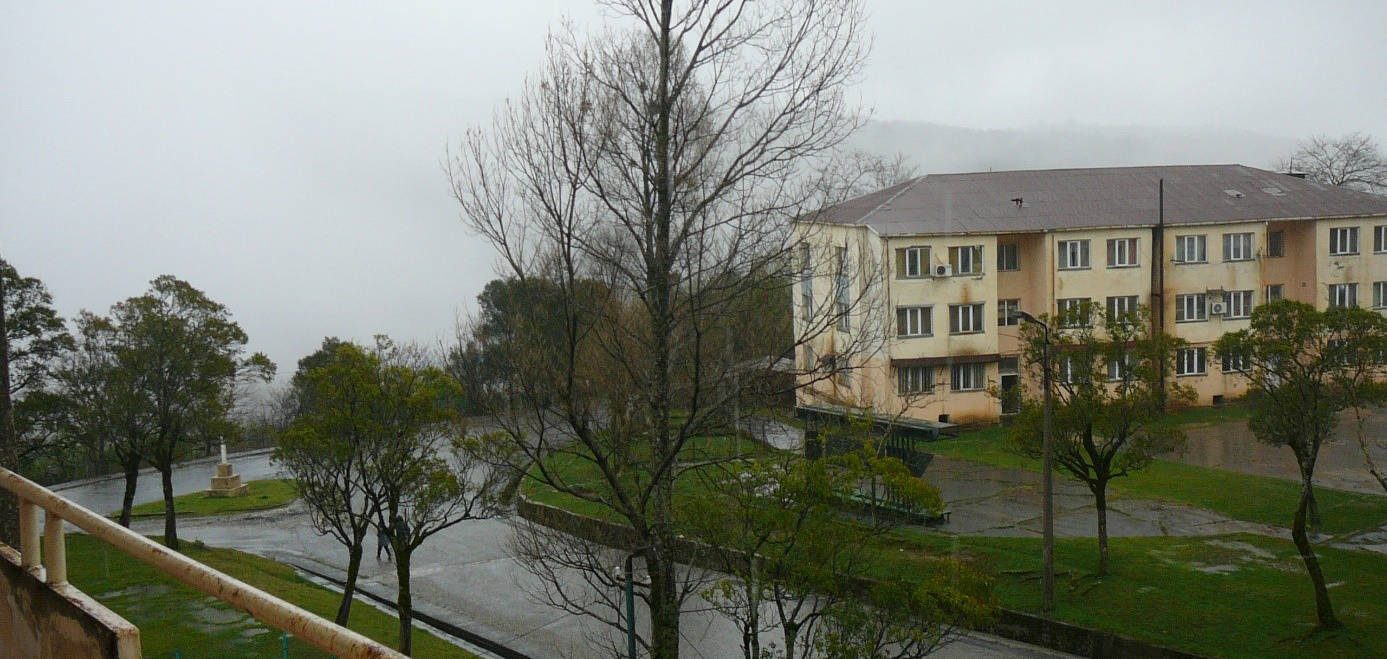
Tuesday, March 28
24/7 measurements in boreholes on levels 3,4,5 and 6.
Monday, March 27
Injection of water… it took several hours to get the water into the borehole Spartak.
Sunday, March 26
After arrival of more loggers we installed them in the tunnels LG 4D and LG 4G and one on Tunnel 5 and one in Tunnel 6.
In the morning Zaza broke something at the car on the road to the damtop. We stirred the salt soup.
In the late afternoon Birgit left for Tbilisi. But we had an extra stop in Zugdidi because of the car. Finally the car was changed an Jura has brought us to Tbilisi where we arrived at ca. 10 in the evening.
In the afternoon it was getting warmer which improved the salt dissolution.
Saturday, March 25
Filling the tank with water and salt… cooking the salt soup. 100 kg of NaCl have been put into the big blue barrel.
In the afternoon Roman arrived with the conductivity sensors. Hurrah.
The eastern road to the warehouse is blocked by a landslide.
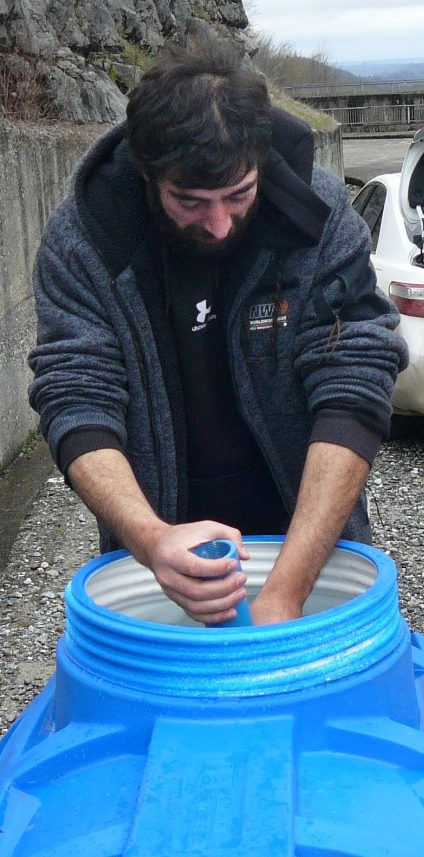 |
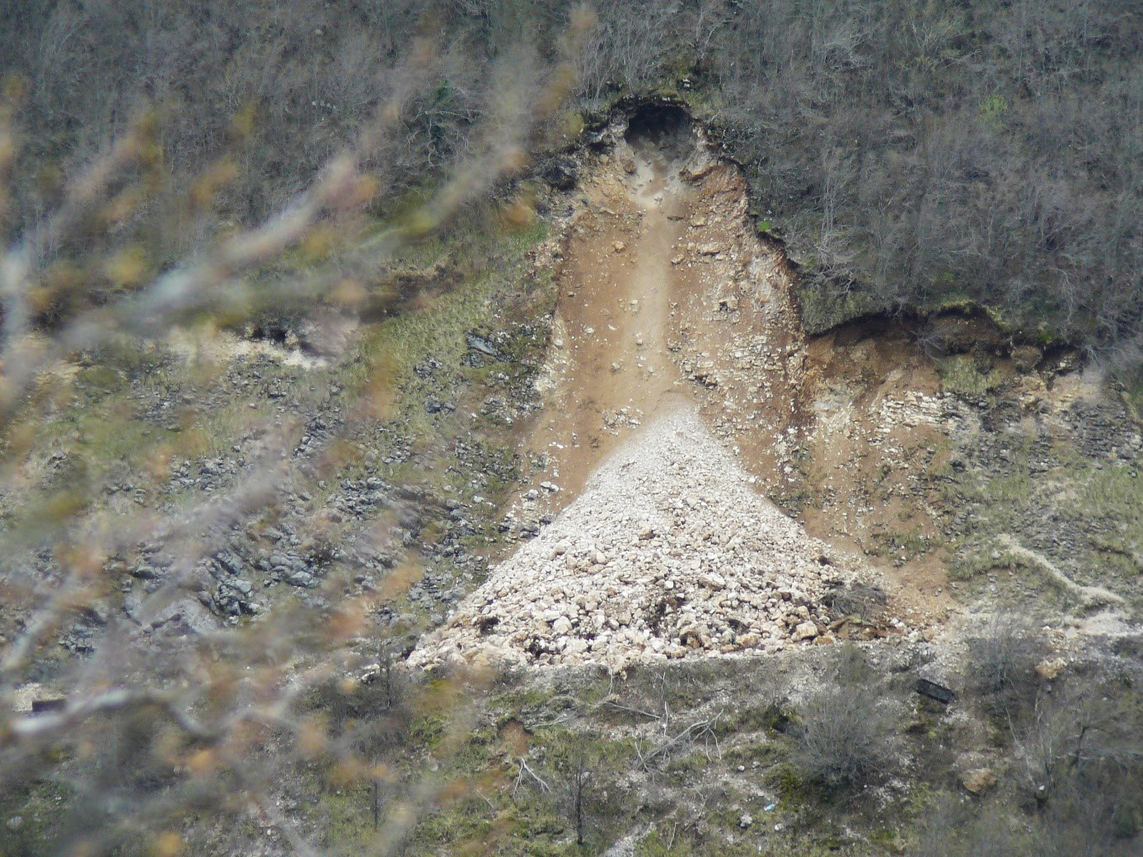 |
Friday, March 24
In the morning we opened Spartak well in really misty weather conditions. In the drillhole a lot of stones are stuck that had been falling from the top. We tried whether the well still takes water, which it did. 10 l of water disappeared in less than 3 min. Thus we decided to use it still for the tracer test because the well has nearly 300 m depth.
We measured the water levels in 4 other wells (Damtop N , Damtop S, Platform E, Platform W).
The team of Koba Gogoxia from Engurhesi provided the Spartak well with a tank. They promised to fill it the next day in order that we can dissolve 100 kg of NaCL in it.
In the afternoon we installed the conductivity loggers of TSU in Tunnel 3/1 in the access tunnel (close to Rummel well) and 3/2 locations in the dam (close to Shumov new drillings).
Thursday, March 23
We marked the potential locations of tracer test measurements in level 3 and 4. Tornike from TSU on the balcony of level 3.
On level 3 we met the drilling team of Alexey Shumov who drilled cores to identify the properties of the concrete in this section of the dam.
Wednesday, March 22
We selected measurement points for conductivity measurements in horizons 5 and 6 (the lower levels). On the photo you see Alexander (GTU) and Thomas leaving the tunnel and being back to daylight.
In the evening we successfully installed Wellcad on the computer of Tornike. After some basic explanations we tried on his own and did really well.
Tuesday, March 21
Arrival at Enguri in early evening. Warm welcome by the ladies.
Monday, March 27
We helped Thomas Röckel with his measurements in the tunnels of the Enguri dam.
Sunday, March 26
Dennis and Konstantin wanted to do a hike which should cross 2-3 fault zones on the right side of the dam but the weather and a guard dog didn’t play along so unfortunately we had to return after 2h with no measurements.
Saturday, March 25
With Thomas Röckel we visited the part behind the dam again and measured slicken slides.
Also in late morning we said goodbye to Onise and his team who left to Tbilisi.
Friday, March 24
We walked the road behind the dam on the east side of the reservoir where we tried to find indicators for the bigger fault zone. After that we drove down the road to Mestia again and visited the area of the old quarry. There we tried to map the Cretaceous – Jurassic contact in the east further inland and drove the road further to the north and found interesting veins in middle Jurassic.
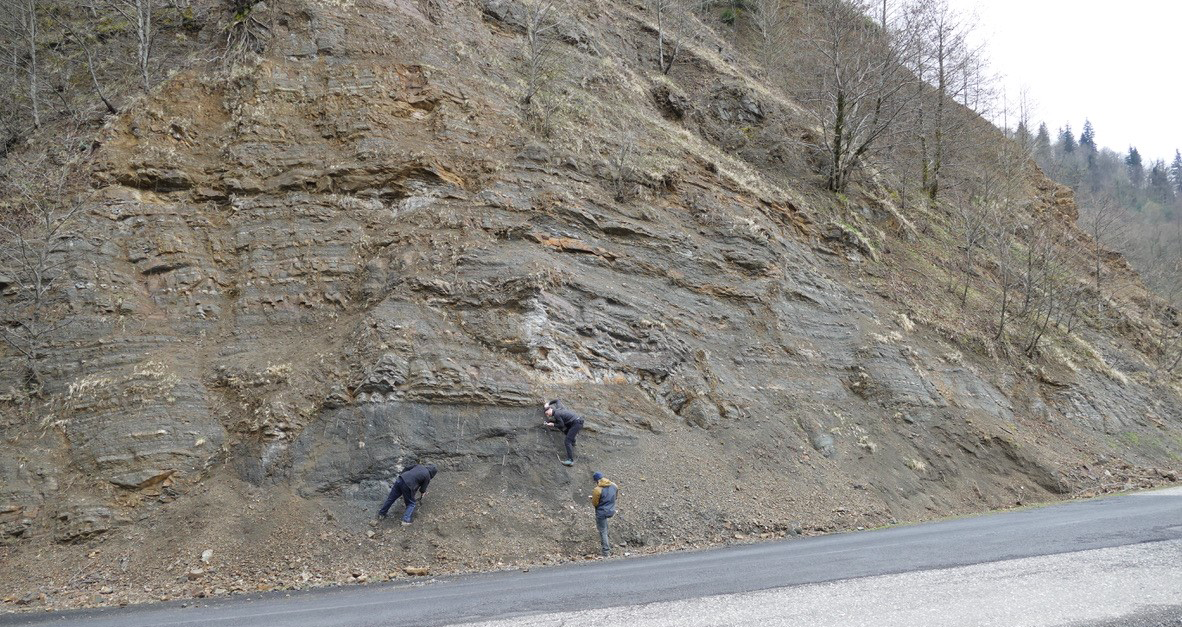
Demur, Dennis and Konstantin at hard work at a the middle Jurassic outcrop
Thursday, March 23
We did a boat trip on the reservoir and investigated the fault zone from water, some of us climbed out of the boat to take measurements. We visited the western side of the fault zone, the Cretaceous – Jurassic contact and the eastern side of the fault zone.
Wednesday, March 22
First we went to the Olori valley and – unfortunately – we found nothing but cemented springs. After that we drove along the road to Mestia east of the reservoir to further search the area for outcrops.
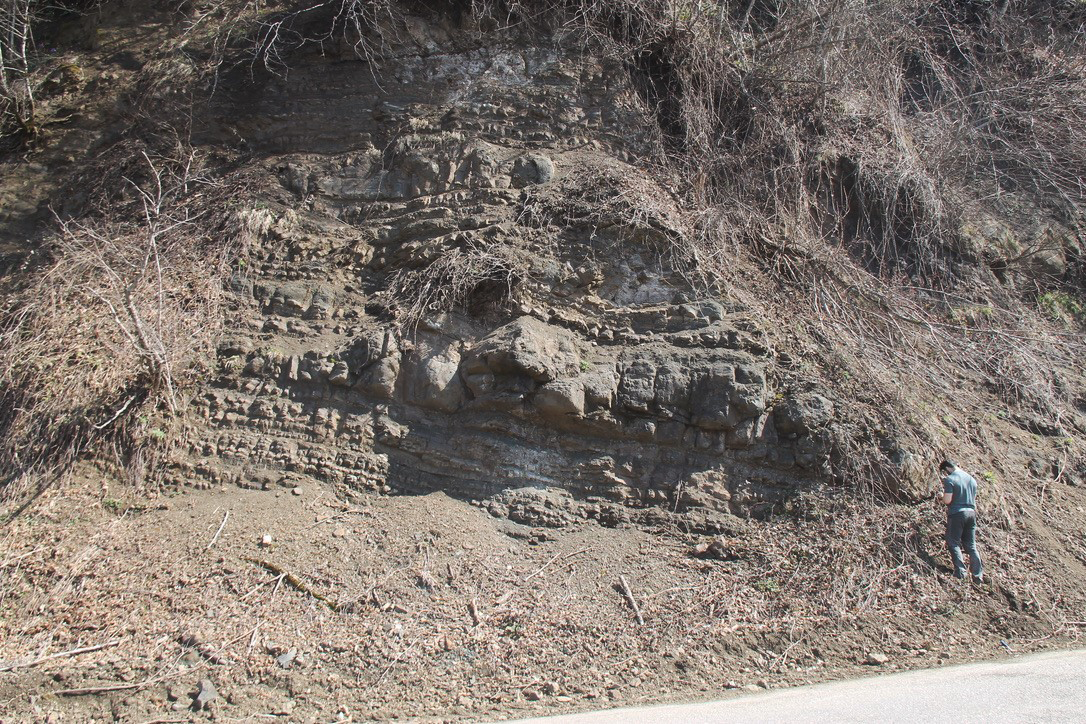
Konstantin taking measurements of a possible fault plane
Tuesday, March 21
During wet and cloudy weather we hiked on the southeastern side of the Enguri dam again searching for clues of the bigger fault system. We found some minor fault systems in shales of Oligocene age and later the contact between Cretaceous and Paleocene. So we assume that we hiked in the zone of the bigger fault.
|
|
|
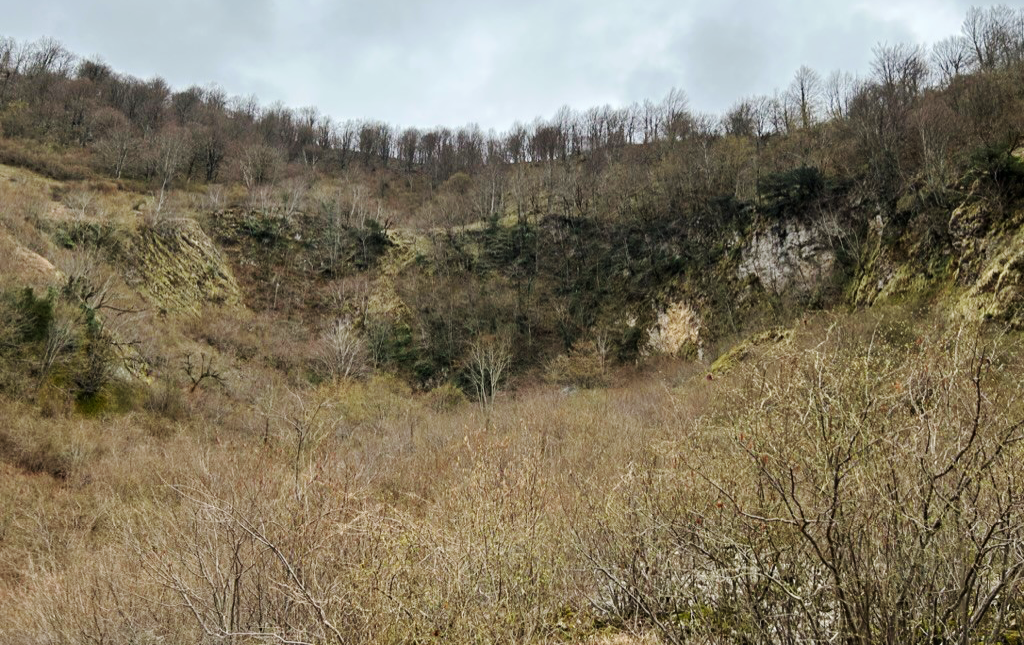
View to the north in the possible fault zone which we climbed up
Monday, March 20
Unfortunately heavy rain so we stayed in the Hotel.
Sunday, March 19
We (Dr. Onise Enukidze, Dr. Alexandre Razmadze and Demur Merkviladze from TSU and Dr. Dennis Quandt and Konstantin Kuhn from KIT) searched for indicators of the bigger fault on the western side of the reservoir at the contact of Cretaceous and upper Jurassic. The weather was sunny but a bit windy. Since the water level is very low we could find clues much lower than the expedition in July 2022.
Saturday, March 18
Arrival in the early evening at Enguri Hotel and a warm welcome by Onise from TSU and his team.

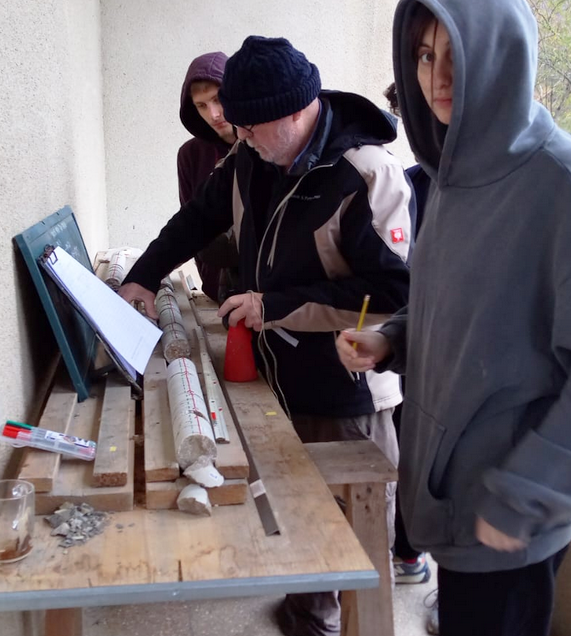
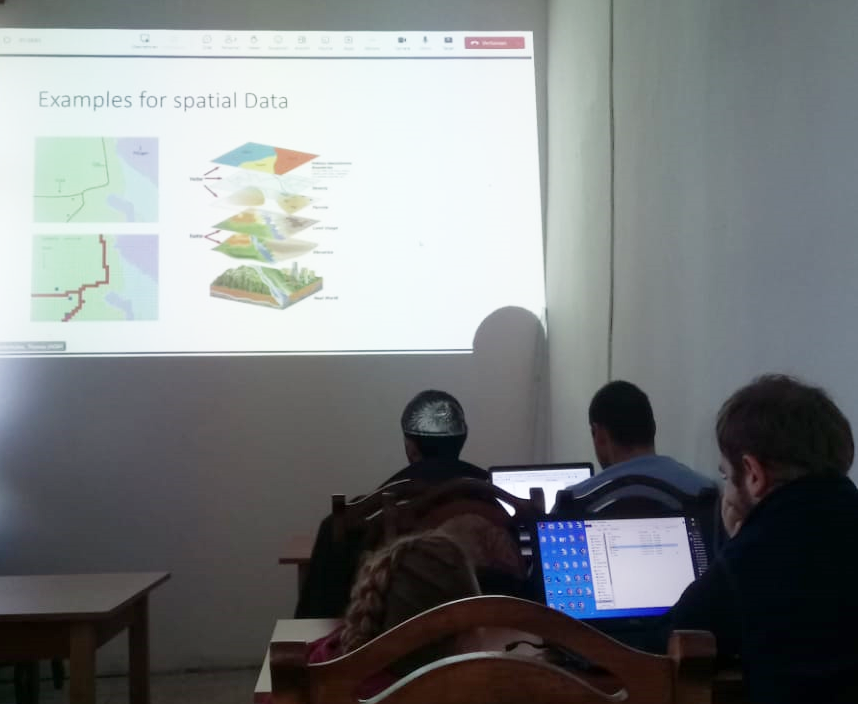 Video lecture for the students by instructor Thomas Niederhuber
Video lecture for the students by instructor Thomas Niederhuber